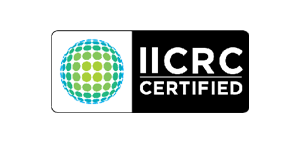Water damage in your home can lead to serious problems, including the growth of mold and structural issues. While some types of water damage are temporary and can be easily rectified, other types can cause permanent damage that requires extensive restoration. So, how do you know if water damage is permanent? In this section, we will discuss the importance of assessing water damage in your home and how to determine if it is permanent or temporary.
Key Takeaways:
- Water damage can lead to serious problems, including mold growth and structural issues.
- It is crucial to assess water damage to determine if it is permanent or temporary.
- Permanent water damage requires extensive restoration and professional assistance.
- Signs of permanent water damage include mold growth, structural issues, and discoloration.
- Take preventive measures and hire professionals to mitigate permanent water damage and prevent further deterioration.
Understanding Water Damage Types
Water damage can result from various sources, such as floods, pipe leaks, or heavy rains. Depending on the cause and duration of exposure, water damage falls into three major types.
| Type | Description | Causes | Signs |
|---|---|---|---|
| 1 | Clean Water | Broken pipes, appliance malfunctions, rainwater | No visible contaminants, no pungent odor, lower risk of health impacts |
| 2 | Greywater | Dirty water from dishwashers, washing machines, and sinks | Visible odors, discoloration, and possible chemical pollutants that can affect human health |
| 3 | Blackwater | Raw sewage or floodwater | Strong, pungent odors, visible contaminants, and high-risk bacteria that pose serious health issues |
Regardless of the type, all forms of water damage can lead to structural damage, mold growth, and other issues that compromise the safety and wellbeing of your home and loved ones.
It is crucial to detect the signs of water damage and take prompt action to mitigate it. Signs of water damage include visible mold growth, peeling paint or wallpaper, warped floors, musty odors, and stains on the walls or ceiling.
Don’t ignore the signs of water damage. Take swift action to remedy the issue and prevent further damage.
Detecting Signs of Permanent Water Damage
Water damage in your home can pose serious risks not only to the structure but also to your health. It is essential to identify the signs of permanent water damage to prevent the situation from worsening. One of the most tangible indicators of such damage is the appearance of mold growth.
Mold growth can lead to numerous health concerns, including allergies, respiratory problems, and infections.
Another sign to watch out for is structural issues. These include warping or buckling of walls, ceilings, and floors, as well as cracks and breaks in the foundation. Discoloration and a musty smell often accompany these structural issues.
Ignoring these warning signs can lead to irreversible damage and result in costly repairs. If you suspect permanent water damage in your home, contact a professional immediately to assess the situation and provide the necessary remedies.
Assessing the Severity of Water Damage
When it comes to water damage, the severity of the damage can vary widely. Assessing the extent of the damage is crucial to taking the appropriate action to mitigate it adequately. However, determining the severity of the water damage can be challenging to do on your own. It’s crucial to seek professional assistance to evaluate the damage truly and provide you with an accurate assessment of its severity.
Professional assessors use specialized equipment and techniques to identify the extent of water damage. These experts can perform moisture mapping, use infrared scanning equipment to detect hidden moisture pockets, check for mold growth, and identify any structural damage. With their findings, they can assess the severity of the water damage accurately.
Depending on the results of the assessment, the professionals may categorize the damage as mild, moderate, or severe. The severity of the damage will dictate the steps you need to take to mitigate it. Mild damage may only require drying out the affected area and repairing any visible damage. In contrast, severe damage may require extensive repairs or even complete reconstruction of the affected area.
Working with a professional is crucial to obtaining an accurate assessment of the severity of water damage. Attempting to gauge the extent of the damage on your own can result in misinterpreting the damage and implementing ineffective mitigation efforts.
Steps to Mitigate Permanent Water Damage
If you have identified permanent water damage in your home, it’s crucial to take immediate action to mitigate further damage. Here are the steps you should take:
1. Hire a Professional Restoration Company
To ensure that all damage is accurately evaluated and properly restored, it’s essential to hire a professional restoration company. They have the expertise and equipment necessary to salvage as much as possible and prevent further deterioration. A qualified restoration company will assess the damage and create a plan to repair it.
2. Implement Preventive Measures
After the restoration process is complete, it’s critical to implement preventive measures to avoid future water damage. This includes installing a sump pump, sealing cracks in the foundation, inspecting pipes regularly, and maintaining your roof to prevent leaks. Additionally, you should perform regular maintenance on your HVAC system, appliances, and gutters.
3. Dry Out the Area
After water damage, it’s crucial to dry out the affected area thoroughly. Mildew and mold growth can occur quickly, so it’s imperative to ensure that the area is dry. A restoration company will use specialized equipment like dehumidifiers and air movers to remove moisture and dry out the area completely.
4. Check for Mold Growth
If any water damage goes unnoticed for a long time, mold growth can occur, leading to health issues for you and your family. It’s essential to check the area for mold growth after any water damage. If you suspect mold growth, contact a professional immediately.
5. Address Structural Damage
If there is any damage to the structure of your home, the restoration company will ensure that it is addressed. If structural damage is left unrepaired, it could compromise the stability of the home, causing more significant problems in the future. Structural damage can include weakened foundations, floorboards, or walls.
By following these steps, you can effectively mitigate permanent water damage and prevent any further harm from occurring.
Conclusion
In conclusion, assessing water damage in your home is crucial to prevent permanent damage and maintain a safe living space. Understanding the different types of water damage, detecting signs of permanent damage, and seeking professional assessment can help you determine the severity of the problem.
If you identify permanent water damage, taking immediate steps to mitigate the issue is essential. Hiring professionals, starting the restoration process, and implementing preventive measures can save you time and money in the long run.
Remember, water damage can cause severe health hazards and structural damage to your home if left unaddressed. Don’t hesitate to seek professional help if you suspect any water damage in your home.
FAQ
How can I assess permanent water damage in my home?
Assessing permanent water damage in your home involves looking for signs such as mold growth, structural issues, discoloration, and other visible indicators. It is also important to seek professional assistance to accurately evaluate the extent of the damage.
What are the different types of water damage?
Water damage can be classified into different types, including clean water damage, gray water damage, and black water damage. Each type has its own characteristics and underlying causes.
What are the common signs of permanent water damage?
Some common signs of permanent water damage include persistent mold growth, structural issues like sagging ceilings or floors, visible stains or discoloration, and a musty odor that doesn’t go away.
How can I determine the severity of water damage?
Assessing the severity of water damage requires professional evaluation. Experts can assess factors such as the extent of saturation, the affected materials, and the potential for secondary damage to determine the severity and permanence of the water damage.
What steps can I take to mitigate permanent water damage?
To mitigate permanent water damage, it is crucial to act promptly. First, ensure the source of water is stopped or repaired. Then, hire professionals who specialize in water damage restoration to extract water, dry affected areas, and implement preventive measures to prevent further damage.





